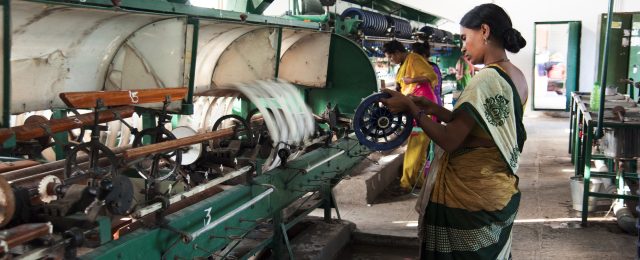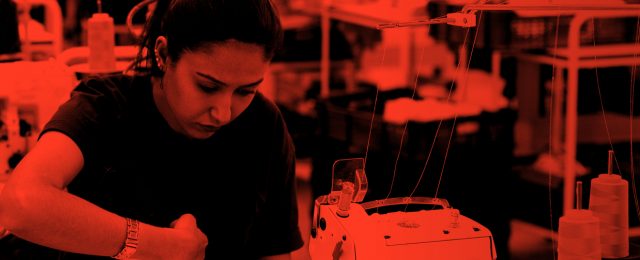Bringing the voices of women workers to the fore: gender inclusivity in garment factories

Worker wellbeing and business excellence go hand-in-hand. At Good Business Lab, we build the business case for firms to invest in their workers through interventions that have been designed, tested, and evaluated using rigorous academic research. Focusing our research on low-income and labor-intensive industries including garment manufacturing in India, we have found that if well informed, firms can facilitate transformative change in their business outcomes by investing in the empowerment of their workers. Read more about the Good Business Lab here
With a shared outlook on the responsibility of businesses in promoting the wellbeing of their workers, we initiated a research partnership with WBA to platform the voices of women garment workers in the discourse on how companies can implement better policies to achieve gender equality within their supply chains. With a view to add a human-focused element to WBA’s Gender Benchmark, we wanted to engage directly with women workers to understand their experience of navigating the deeply nuanced and complex socio-economic contexts within which gender disparity exists on the factory floor. GBL’s Design team conducted interviews with 26 women garment workers across 12 factories in India to capture their aspirations for better workplaces across three topics: access to health facilities, grievance redressal mechanisms, and opportunities for job growth and skilling.
Our questions for each of these three themes were anchored around three indicators: their awareness of a facility, their access to a facility, and overall experience of using the facility. Through this activity, we were able to capture both individual experiences as well as get a sense of recurring advantages and pain-points women workers incur through their everyday experiences on the factory floor. Our second stage of analysis was to interpret the following trends: whether awareness of a facility implied increased usability of the said facility, which factors increased or decreased the ease of access for the woman worker, and how socio-cultural norms influenced the experience of using a particular facility. For instance, we found that many women workers were comfortable discussing menstrual hygiene with their women peers or managers and nurses but did not have the same comfort expressing menstruation related discomfort with any male manager. Another example is the fear of victim blaming, distrust in management could dissuade women workers from lodging sexual harassment complaints.
These interviews pushed forth perspectives that emphasize how achieving gender equality by companies goes beyond compliance commitments. Working on this report and joining the Alliance presents GBL with a great opportunity to communicate and engage with a host of companies who are each at the helm of working with stakeholders in their wider supply chains. By using rigorous research, our aim is to inform their conversations around gender equality with often missed perspectives of women workers – who are the main stakeholders in this larger discourse.
The Gender Benchmark concludes that there is immense work needed to be done by companies to achieve the Gender Equality Sustainable Development Goal. Through these qualitative interviews and other research, we have insight into the lived experiences of women workers in the garment industry. Our endeavour is to work collaboratively with companies to help them achieve their commitment to bring about gender equality in their supply chains.

Written by: Ankita Nanda, Partnerships and Design Associate, Good Business Lab
